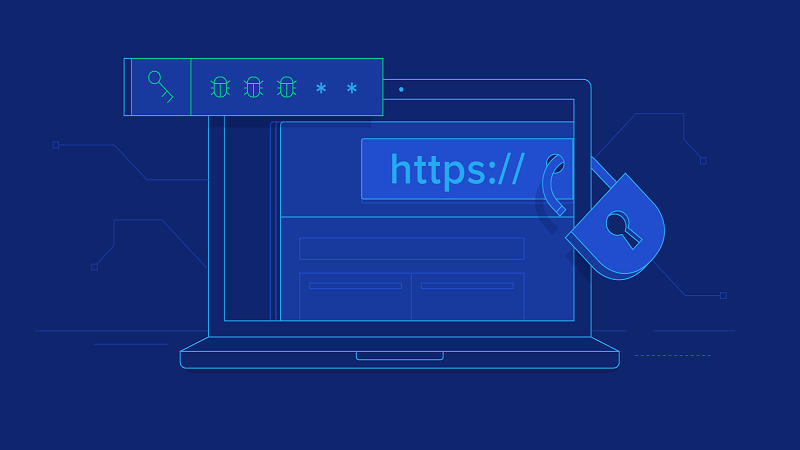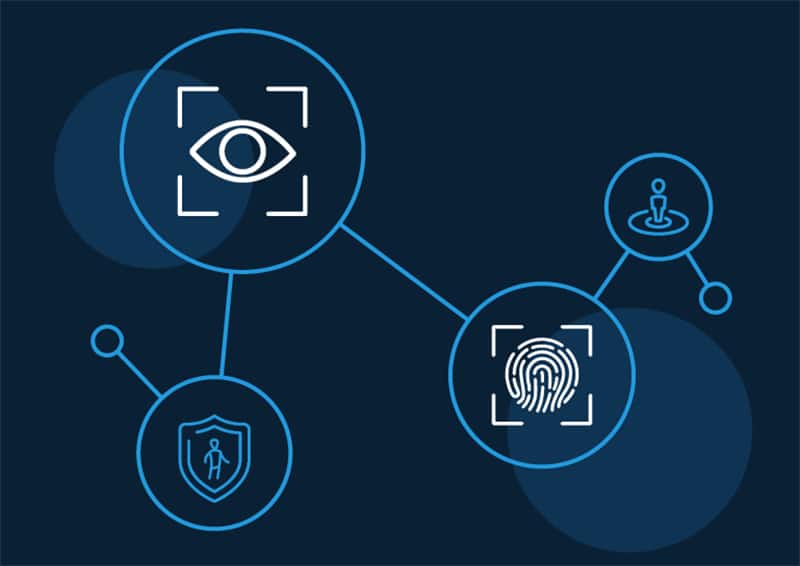
Gartner predicts that by 2022, 60% of major and worldwide organisations, as well as 90% of mid-size enterprises, will utilise passwordless authentication techniques in more than 50% of use cases, up from 5% in 2018.
It's becoming increasingly difficult to combat Account Takeover (ATO) fraud. Everything from e-commerce to digital wallets, online banking, telecommunications, and health care has been affected by this phenomenon.
Fraudsters are constantly looking for new ways to gain and use personal information. Once they obtain your personal information, they use advanced machine learning to keep up with the latest anti-fraud measures. ATO approaches that are most typically employed include:
- To obtain account credentials and intercept one-time passcodes to reset account passwords, phishing or man-in-the-middle attacks are used.
- Credential stuffing is the automated checking of stolen usernames and passwords across various websites in order to take over a large number of accounts at once.
- Answering Knowledge-Based Authentication (KBA) security questions with stolen or publicly available data.
ATO has become a major issue for both customers and businesses in the world of e-commerce. Globally,7K data breaches exposed 15 billion user records in 2019, according to the Ponemon Institute.
A data breach involving customer information has occurred in about one-third of all US companies. As a result, there has been significant damage. ATO attacks increased by 43% during the most recent COVID lockdown.
ATO has already cost the US market USD 6.8 billion in losses, and that number is expected to rise as 32% of victims refuse to do business with a merchant whose security was breached as a result of ATO. According to IBM security, the average cost of a data breach is $3.86 million. Every minute, about 28K usernames and passwords are stolen.
Why passwordless authentication is emerging as a better option

Since the introduction of password technology in 1961, user authentication methods have progressed. Authentication techniques that rely on shared secrets are losing ground to standards-based passwordless alternatives that focus on security and ease of use for customers.
Different types of authentication are:
When it comes to passwordless authentication, mobile phones and fingerprints or FaceID are the most commonly used methods.
Consumers favour biometric authentication over password-based authentication in a recent Visa survey. Respondents most frequently mentioned the advantages of biometric authentication:
- Having to remember several passwords/PINs is eliminated (50 percent)
- Not forgetting/losing a form of authentication (46 percent)
- Better security than passwords/PINs (33 percent)
5 advantages of a passwordless login or signup
Passwordless authentication, as an alternative to passwords, has a number of advantages that should not be overlooked: ease of setup, higher conversion rates, enhanced security, and lower maintenance costs are just a few of them.

1. Frictionless signup process
Businesses can no longer afford to ignore the importance of making their products and services accessible to their customers. You want to be able to access all of your applications at any one time. Passwordless authentication eliminates the need for users to remember or create passwords, allowing them to gain access based solely on their attributes.
The OTP connected to the phone number, for example, is the preferred login method for a user wanting to access an application. It's a matter of seconds before the user's phone receives the OTP, and they can simply enter it to log on!
Because the OTP is unique to the user and the phone is almost always in the user's possession, it provides security while also making it easy to access.
With just a single click, you can verify your identity and meet all of your company's security requirements. Passwordless authentication offers the best user experience when compared to traditional methods of authentication – simple, fast, and safe.
2. Increase conversion rates on forms
A more user-friendly experience is provided with passwordless authentication. Signups and payments are completed more quickly with a passwordless login method.
3. Reinforced security
In addition to passwords, there are other outmoded components, including password databases. It reduces the risk of theft or security breaches by removing them. Passwords can be predictable and repeated even when the database security is optimum because of redundant authentication using passwords.
Using a password-free login method allows the user more freedom. Keeping track of multiple passwords and remembering them all is difficult. Users can choose from a variety of passwordless authentication options here. You can use a biometric login, OTP, PIN or anything else.
As a result of these measures, users are protected from being phished because they don't have to provide personal information on a website.
4. Reduced costs and maintenance
Password management and password recovery is a side effect of password setting. Password management can save large companies up to $1 million, according to Forrester Research.
5. Contextual security with IAM
Using numerous factors to authenticate was a common problem with multi-factor authentication. User experience can be dramatically improved if passwordless authentication is implemented using IAM.
A password or OTP login is required only when a user, who is known to log in from a specific device, does so. Now, when a person attempts to log in, they are greeted with an additional notification on their email address because the device attribute is different. This can help verify that the user is who they claim to be.
How to implement a passwordless login in your forms
Authentication systems such as one-time passwords or magic links can be used to perform passwordless login or signup. The user can receive both through email, notification, or SMS.
Passwordless authentication with one-time passwords
One-time passwords (OTPs) are one-time codes that are linked to a certain user and are only valid for a limited period. When the user enters the code correctly, OTPs are delivered to their email or phone, allowing authentication.
OTPs are frequently used as a supplement to passwords in multi-factor authentication systems. They can still be used as the sole mode of authentication, allowing your users to forget about passwords.
Passwordless authentication with magic links
Magic links are secure URLs that contain tokens that allow users to be verified and authorised just by clicking them. They can be delivered to users via text message (SMS) or email.
They can be used as a stand-alone authentication factor or as part of a multi-factor authentication system, just as one-time passwords. However, because opening mail and clicking on the magic link (which is one type of OTP) creates friction, SAWO Labs does not send Magic links and is genuinely OTPless.
Implementing passwordless connections with SAWO Labs

SAWO SDK operates as a hidden layer between your user and your platform; it's a magical layer that, after a quick integration, may provide you with unrivalled performance. You might be curious about how this all works, from a few lines of code to all solutions; let us walk you through the process.
To begin, SAWO identifies the user during the initial registration process in order to assist the client in identifying data relevant to the user's identification and other information.
From here, the user is issued two keys: a public key and a private key; the user's device will keep the private key while registering the public key with the service; a fun fact is that SAWO is based on the FIDO protocols, which add another layer so that you don't provide information that can be used by different online services to collaborate and track a user across services. If biometric data is used, it is never sent outside of the user's device.
Let's look at what happens when a user wants to log in. The server sends a challenge to the user's device, and the client device authenticates itself by using the private key and proving ownership. This signing of the challenge can only be done by the user device, making it secure and removing the need for passwords.
We also have OAuth protocols implemented for user privacy, which allows us to ensure that for authenticated access to unrelated services and servers, the initial login credentials are never shared.
SAWO is an authentication system that allows users to be onboarded without the use of passwords or one-time passwords, making the process simple, quick, and safe. SAWO employs a robust cryptography-based authenticator that outperforms OTPs, passwords, and social logins.
Some advantages of using SAWO Labs are:
Biometric Authentication: SAWO allows you to make the most of your device's capabilities; we've given you the freedom to use whatever power you want, whether it's your fingerprint, IRIS, or even your voice, because biometrics are just an extra layer, and because that extra layer is on the user's device, biometric data never leaves the user's device, thus optimising authentication speeds!
Data Autonomy: We're all tired of social logins sharing our data without the average user knowing what data they're sharing, or today's apps handing over registration data to services; with SAWO, you have the power to choose which data you want to share, all powered by SAWO's SDK and backed by end-to-end encryption.
Bounce Rate is Reduced: According to the industry average, 55% of your visitors will not even attempt to register on your website. The most common issue is a lengthy and inconvenient registration process. SAWO's quick and secure login process allows you to boost client onboarding by 54%.
Multi-platform Support: When it comes to providing users with security and convenience, frameworks shouldn't be a hurdle, thus we make it simple to integrate and support all major web, cloud, VPN, remote access gateway, and other platforms.
User-Friendliness: The time it takes to register a user has been reduced to seconds, and the contact information you were previously using to add people to your mailing list, which only had a 2% success rate, can now be used to register your user. Furthermore, a simple registration that takes only a few seconds reduces bounce rates by a factor of ten. Make your users forget about passwords and enjoy your product instead. and at the same time make it easier for them to check out products, using SAWOs inbuilt technology, your user would not have to waste any time on remembering passwords and a streamlined process will only enable conversions.
Do you want to give SAWO Labs a shot? Create your own passwordless authentication methods for your forms by signing up for free.










